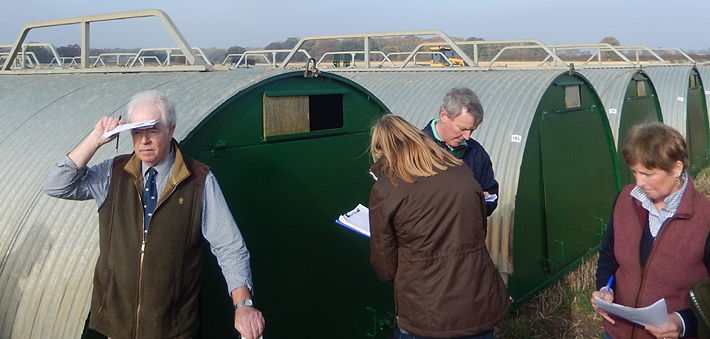The ongoing problem of having too many pigs in the system continues and is reaching crisis proportions in some areas.
Whilst it is all very well to recommend that numbers should be brought forward for Christmas, with most abattoirs and cold stores full, there is very little extra demand for the surplus pigs on offer and in the system.
This is underlined by the SPP dropping yet again and shedding 1.29p to stand at 154.05, but a glance across the channel underlines an even more serious situation in Europe where the influential German pig price has slumped by 8 Euro cents to stand at 1.19 EUR, which is equivalent to a meagre 1.05p/kg.
With EU pork penetrating the UK market at these price levels, domestic pig values are becoming even more uncompetitive with the door being opened on yet more imported pig meat at a level that the UK industry cannot compete with and the price gap is more like a canyon.
Weekly contribution prices are continuing their downward tumble with most easing by between 2p-3p from 143p downwards. Spot bacon trade remains virtually non-existent with space at a premium and although regular sellers have in the main been able to agree to deals between 132p and 138p, one-off loads of pigs were reported to be available at 130p.
Not only is Christmas just around the corner, but carcass weights are continuing to soar with the latest SPP average weight breaking previous records, at 88.24kg.
Cull sow prices have also tumbled after several weeks of hanging on at stand-on levels but a fairly savage 6p/kg was taken off their values on Friday, meaning that UK sow prices are now mainly below 40p and an average cull is worth little more than £50 after deductions. This means that those farmers who have been charged £200 for replacement gilts will have to almost give away four sows to buy one gilt.
The Euro has remained relatively stable, trading on Friday worth 89.31p and any reduction in the value of the Euro would be welcomed with open arms.
The latest AHDB 7kg weaner average looks fairly respectable at £39.57/head but with most weaner contract prices based on the SPP, these will inevitably come under pressure too.
The slowdown in pig numbers being slaughtered is also feeding through to the lack of rearing and finishing space and in nativity terms we are approaching a “no room at the inn” scenario, not helped by rising feed prices and expensive straw for those who can afford it in the first place.
Commodity prices continue to paint a fairly bleak picture for producers with UK feed wheat futures traded at £196/t for December and £159/t for September ’21.
Feed barley remains an attractive alternative traded at £151/t for December especially when compared with UK spot ex-farm feed wheat averaging £185/t.
Protein prices are also keeping pig producers on the edge of their seats, with Hipro soya traded for December/January ’21 at £396/t and for more distant months, June-October ’21 indicative prices are in the £362/t region.
The message the other side of the Atlantic is that Chicago maize futures have also closed higher due to strong export demand and Chiago wheat futures remain bullish.
And finally, although most of the headlines have been dominated by the Covid situation, the other potentially enormous elephant in the room has scarcely been mentioned recently. Unless a Brexit deal can be done, the EU may impose inspections on all cross-channel imports/exports which could lead to huge freight haulage queues according to Government sources.
The two-way pork trade is essential for the industry, but potential port delays could kick logistics schedules into the long grass.
The only shaft of sunlight would be if regulations led to a reduction in imports of foreign pig meat and stimulated demand for the home produced product, but if the whole Brexit situation is met face on, a chaotic period for our pig industry could be in store at a time when it is facing challenges in all directions.




